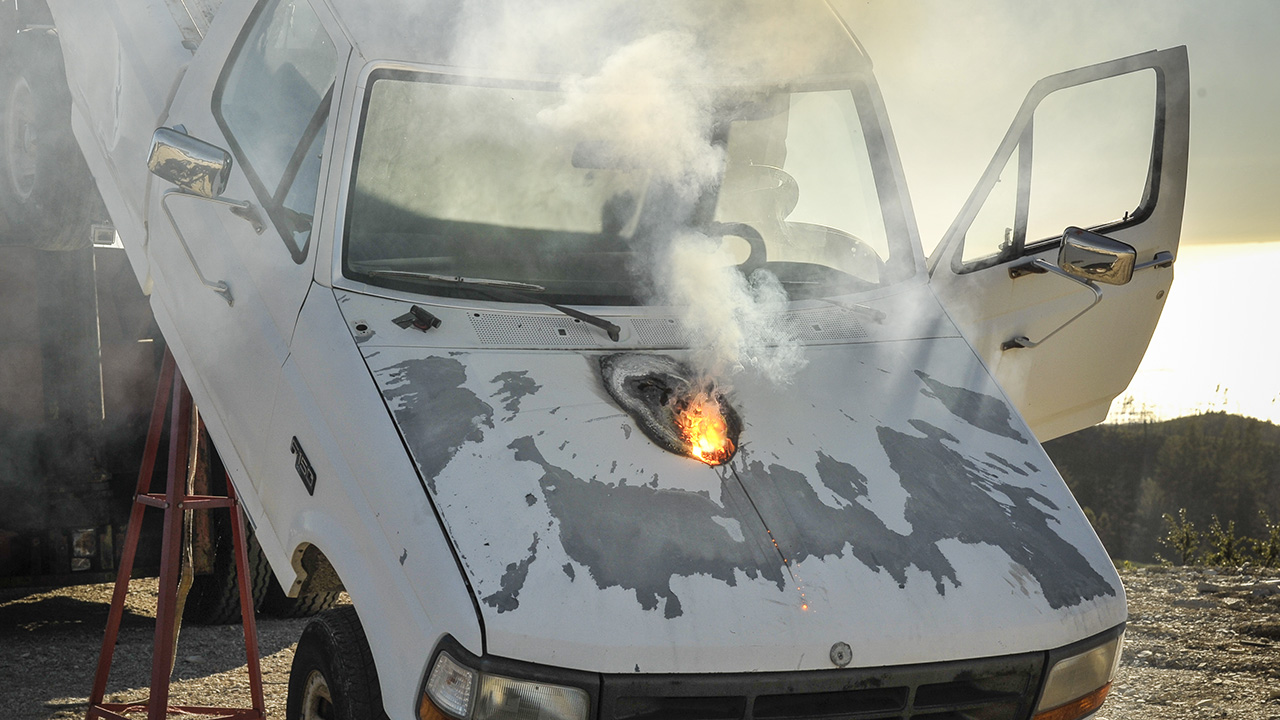
The Air Force Research Laboratory has contracted Lockheed Martin as the final leg of its aerial combat laser triad, a project whose 2021 culmination is planned to include flight testing on an aircraft yet to be named. AFRL illustration.
If all goes according to plan, Air Force tactical fighter jets will fire lasers in 2021, testing capabilities from the service’s now completed laser triad’s new weapon system.
The Air Force Research Laboratory closed the triad Monday, awarding Lockheed Martin a $26.3 million contract to design, develop, and produce the actual laser portion of the lab’s Self-protect High Energy Laser Demonstrator (SHiELD) program. With SHiELD, AFRL hopes to create small yet powerful laser systems on tactical aircraft for self-defense purposes, with focus on ground-to-air and air-to-air capabilities.
The laser portion of the program, Laser Advancements for Next-generation Compact Environments (LANCE), means Lockheed is on the hook to convert electricity to laser in a method strong, small, and efficient enough to be practical on the air combat stage. The purpose of the laser itself is to direct a beam of photons at a target, be it an incoming missile or maybe an adversary, and heat it up to the point of disability or destruction.
Lockheed’s laser weapon systems senior fellow, Rob Afzal, told reporters Tuesday the laser had to be “very compact,” reliable, and rugged, presenting a challenging project for the company.
Afzal said he “wouldn’t be able to discuss range,” among other details of the project. Also, the power of the LANCE laser—how much directed energy it can deliver—or the specific aircraft on which AFRL plans to mount it were “too sensitive” to discuss, a Lockheed spokesperson said. However, some of the capabilities Lockheed has demonstrated in the realm of directed energy to-date paint a picture of what its lasers can do.
Lockheed released video in late September of its Advanced Test High Energy Asset (ATHENA) laser destroying UAVs.
That same ATHENA system, which has a 30 kilowatt laser, was also able to take out a truck, disabling its engine, as seen below.

In March 2015, Lockheed Martin announced its ATHENA laser “recently” took out a truck engine. Lockheed Martin photo.
Lockheed will work with Boeing and Northrop Grumman on the 2021 planned testing, each of which own a third of the program. In late 2016, AFRL awarded Boeing a contract for the laser pod research and development (LPRD, pronounced “leopard”) portion, by which the company will build a mount to house the laser on tactical fighter jets, power it, and cool it. Work is expected to be complete in December 2021. A month before that contract, AFRL awarded Northrop Grumman the SHiELD Turret Research in Aero Effects, or STRAFE, portion. Northrop’s goal is to control the beam, the brain of the system. Its testing begins in 2019, according to Northrop.
Since it’s coming in last, Lockheed will be working around the infrastructure already laid by Boeing and Northrop, including “a lot of self-protect features” and “built-in tests” on top of what the other companies already have installed, Afzal said.